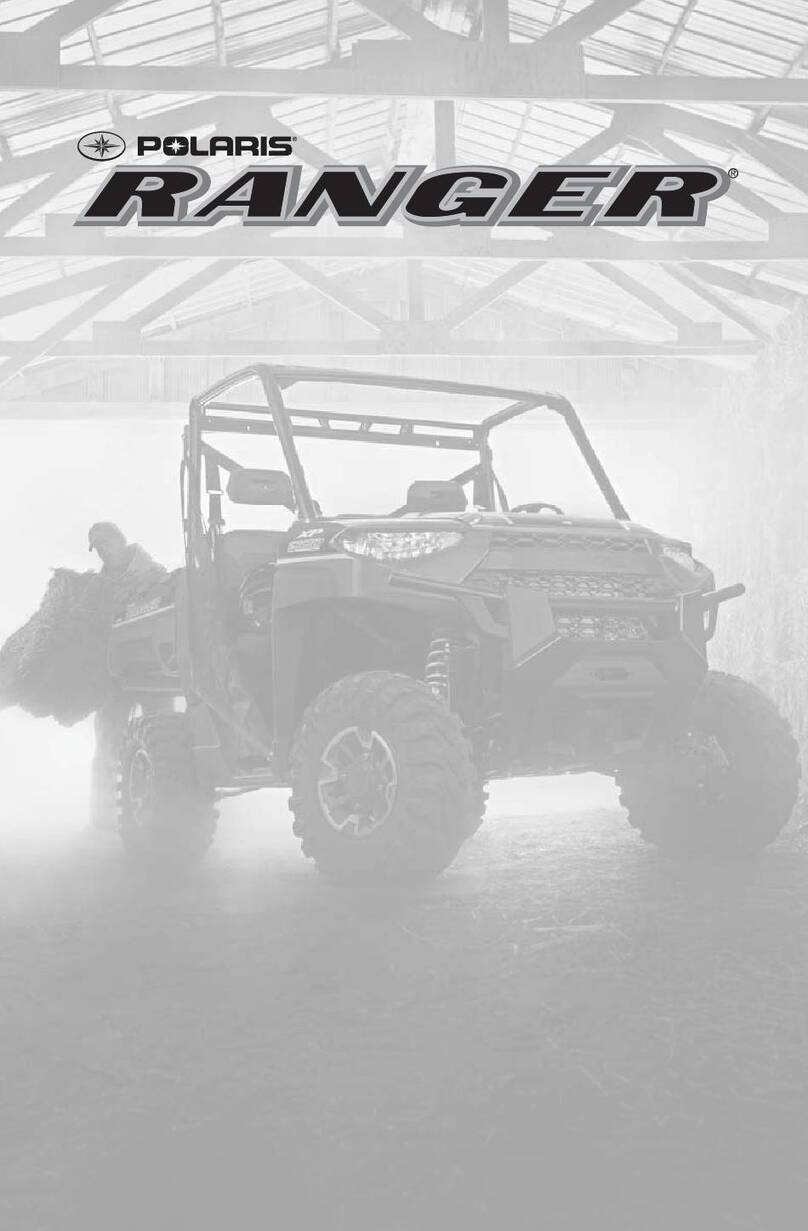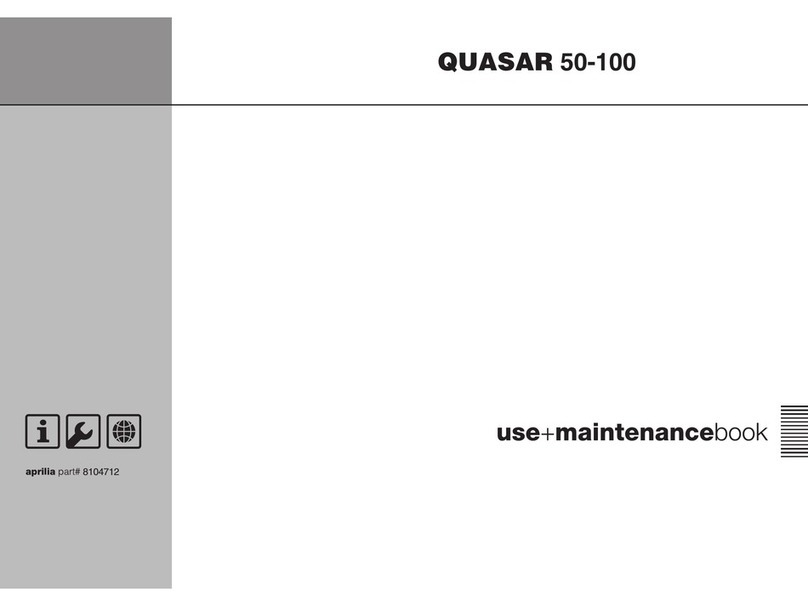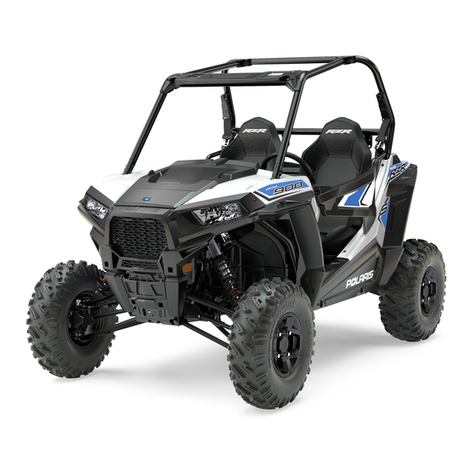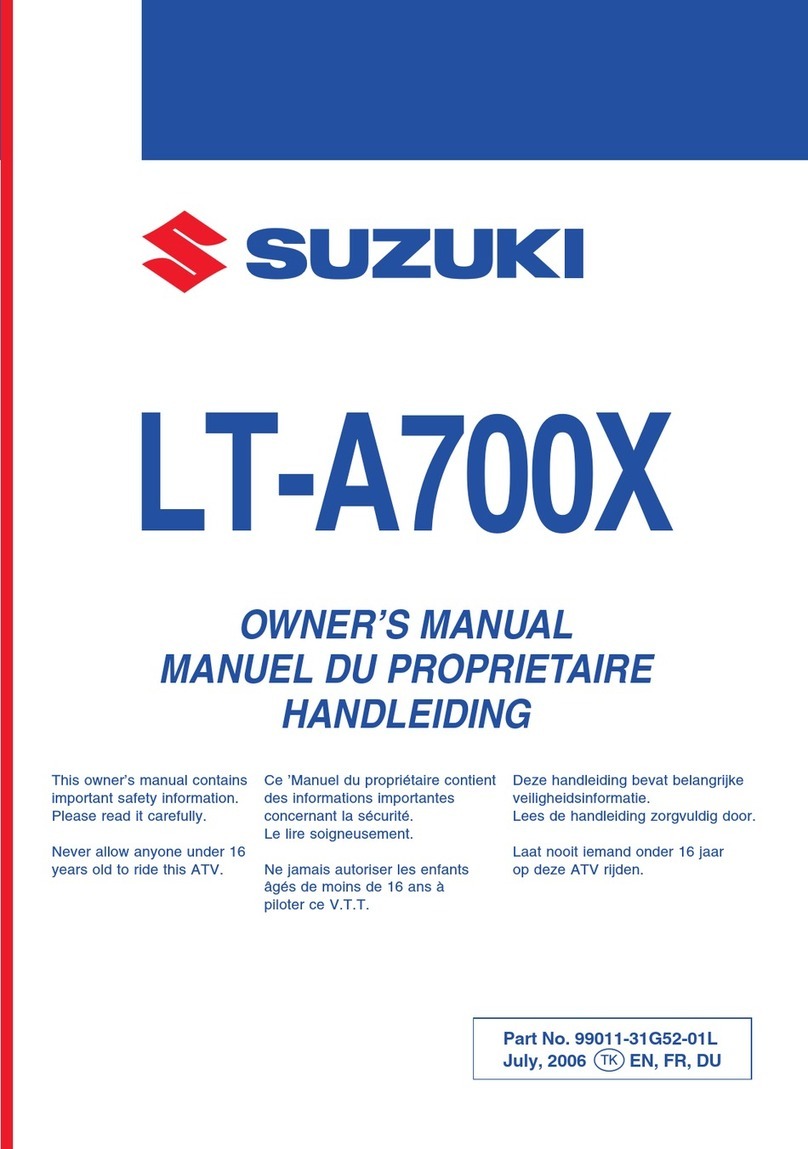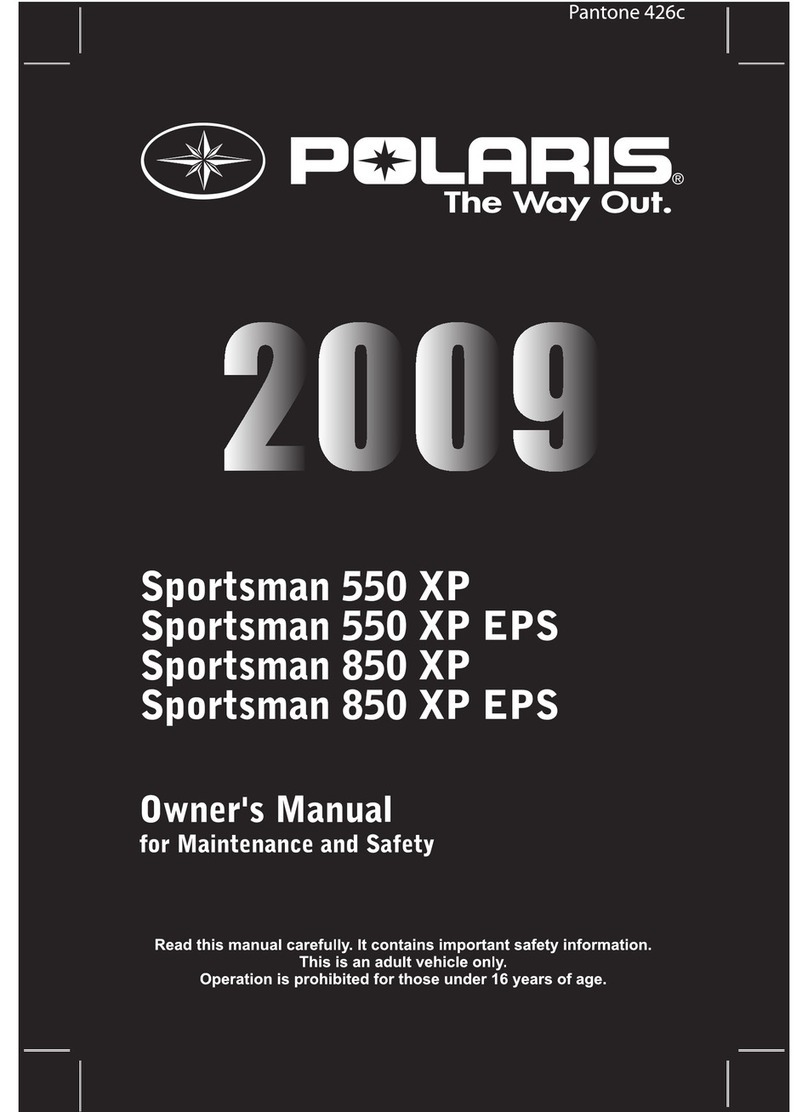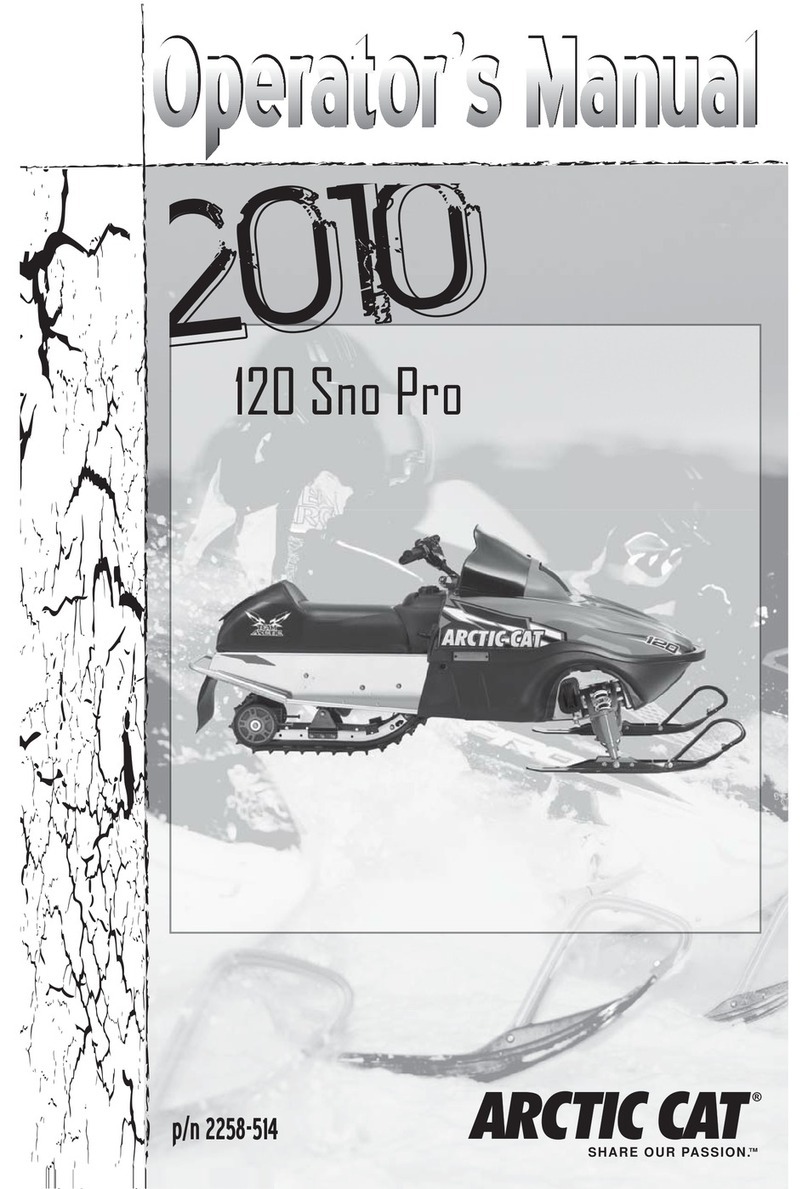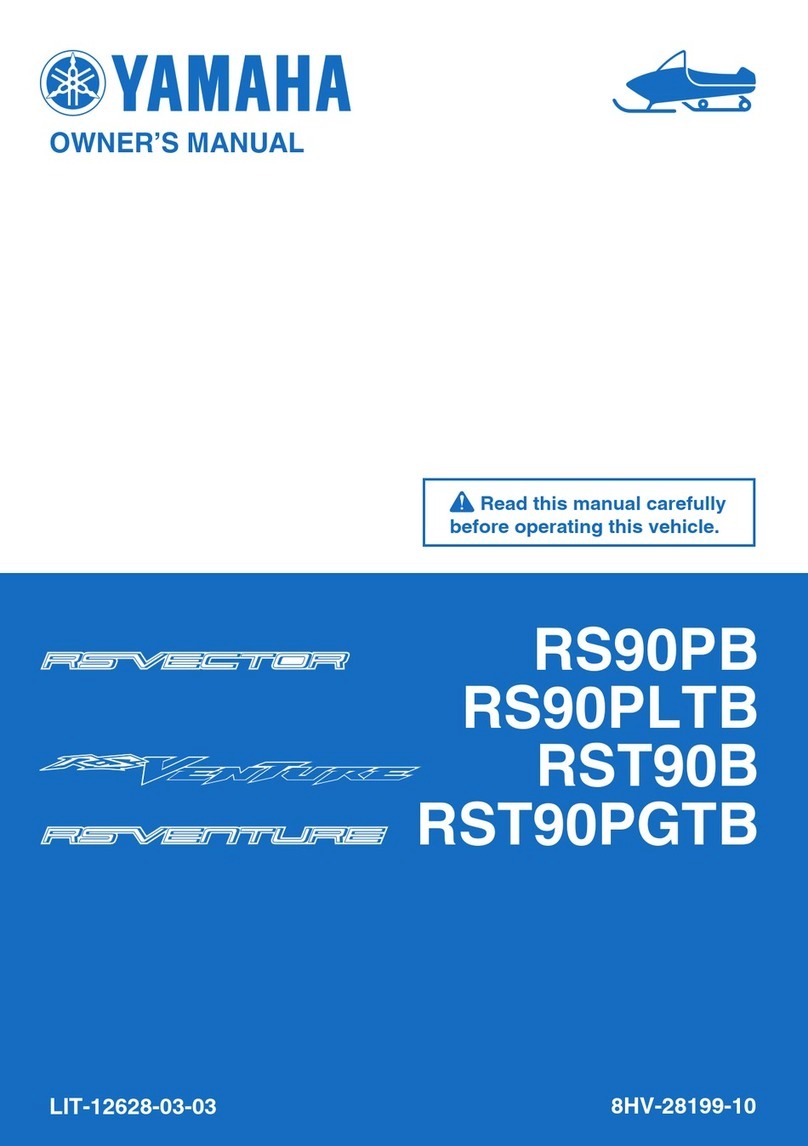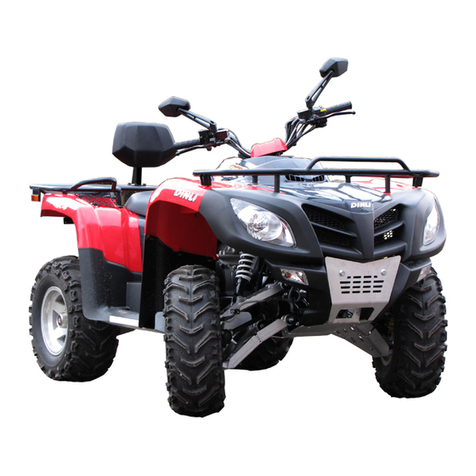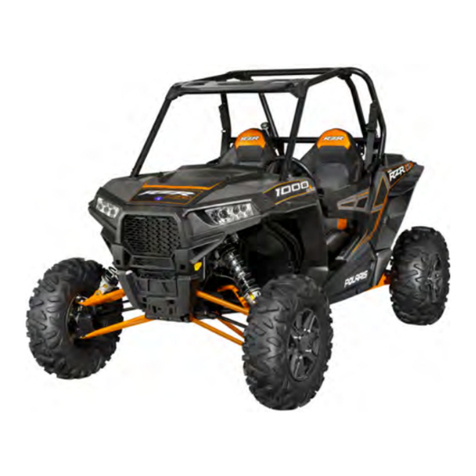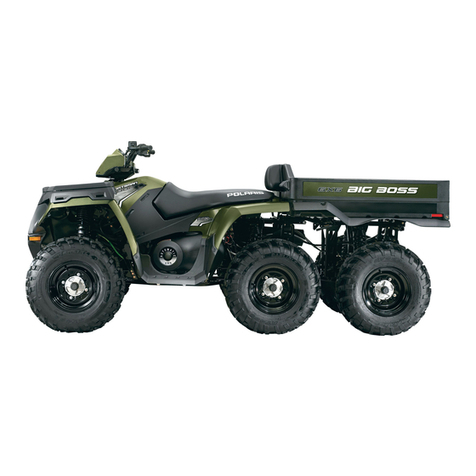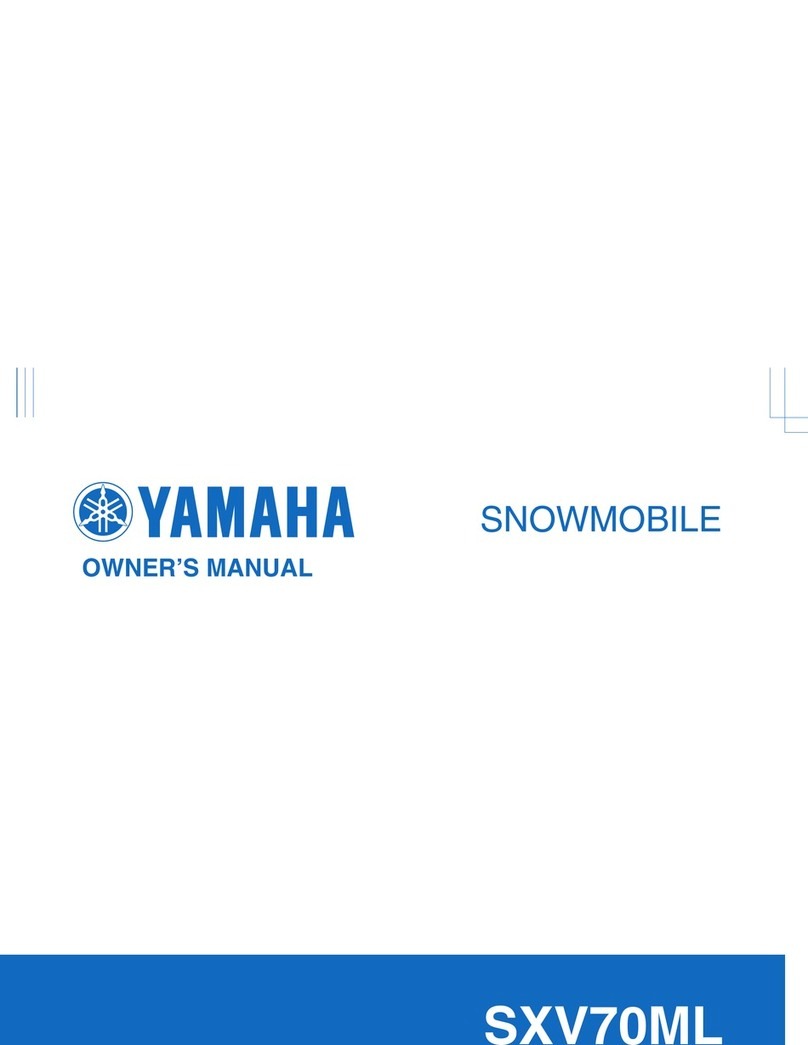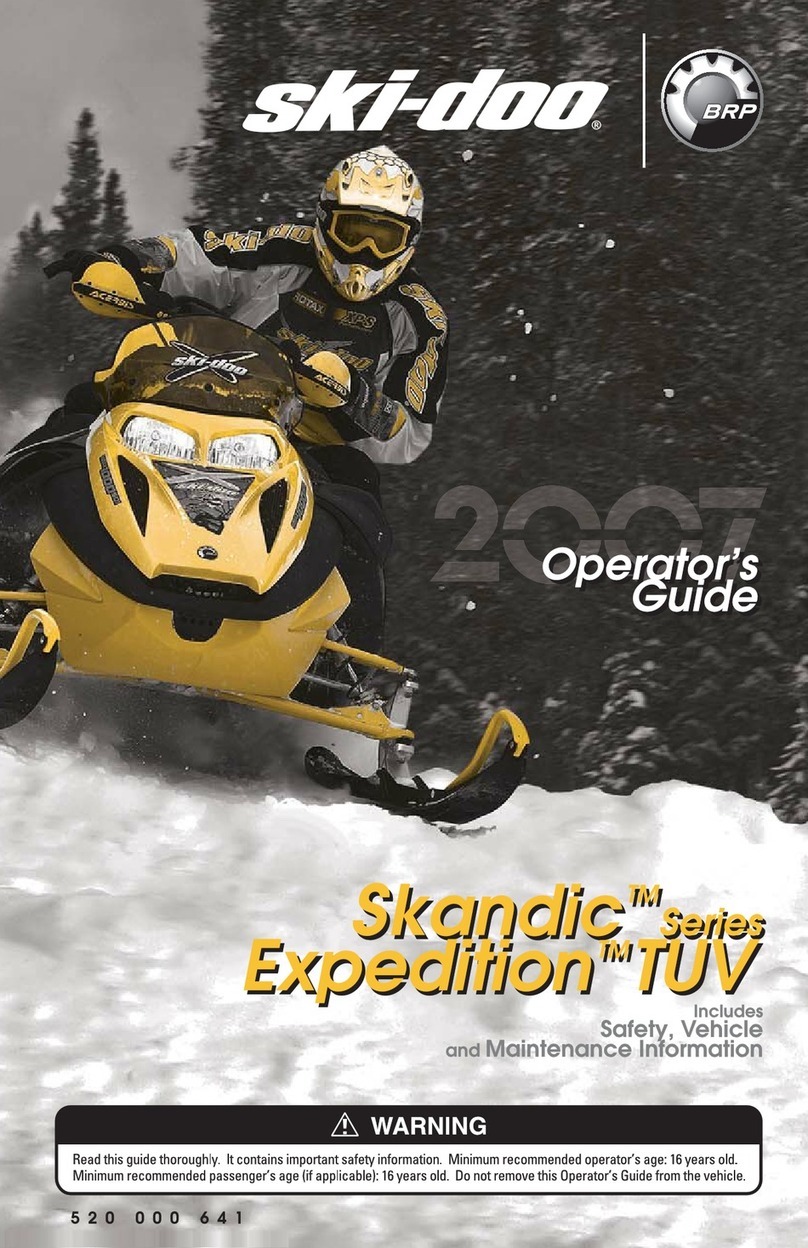
2
5. Snap rings can be deformed if opened or closed too much during disassembly. Please do not use
snap rings that have been compromised.
6. After disassembly and inspections, clean the parts and blow the cleaning agent away with
compressed air before measurements. Grease the moving surfaces before assembly.
7. During disassembly, check all the necessary parts for wear and measure. Before re-assembly
make sure all parts are within specification.
8. Bolts, nuts, screws and other fasteners shall be pre-tightened by hand, then torqued to the
specified torque value, In a diagonal sequence from large to small fasteners and from inside to out.
9. Inspect rubber parts before disassembling and replace if necessary. In addition, some rubber
parts are not resistant to gasoline, kerosene and other corrosives. Please keep these rubber parts
away from volatile oil and grease.
10. Smear or inject recommended grease in specific places as required in service manual.
11. Use the correct tools for disassembly and installation.
12. Bearings inner race or outer races can be checked by rotating with finger to confirm whether the
rotation is smooth. If the bearings are a press fit, and the removed bearing is disfigured the bearing
shall not be used again. If there are problems as bellow, please replace bearing.
Bearing axial and radial clearance is loose
The bearings if stuck or frozen, Please clean and lubricate. If the bearings still feel stuck after
cleaning, replace it. If it can’t be cleaned, replace it.
If the bearing is originally compaction fit with vehicle or axle diameter, but it gets unsuitable
after disassembly, replace it.
13. The bearings should be lubricated with oil or grease before assembly. Notice the direction of
installation when assemble one-side dustproof bearing. When assemble open or double-sided
dustproof bearing, make the manufacturer's logo and dimensions outwards.
14. Install snap rings with chamfered side towards force direction. Do not use the rings that have
been deformed. After assembly, rotate the rectangular ring to confirm that it is firmly installed in
the slot.
15. Please check whether all fastening parts are tightened and that function is normal after
assembling.
16. Brake fluid and coolant can damage the coating surface, plastic parts, rubber parts, etc., do not
let it adhere to these parts, in case of adhesion rinse with water immediately.
17. Make the side with manufacturer’s mark outside when install oil seal:
Pay attention not to make oil seal lips curl, do not let burrs scratch oil seal lip during assembly.
Grease the oil seal lip before assembly.
18. When installing rubber hoses, insert the rubber hose onto the fitting. If there is a hose clamp,
install the hose clamp in the hose indentation if there is one. Replace the rubber hoses that are
loose, dried or cracking.
18. Keep the inner of engine and brake hydraulic system away from dust and clay.
20. Clean gasket materials on mating surfaces before installation. Any scratches or gouges on the












